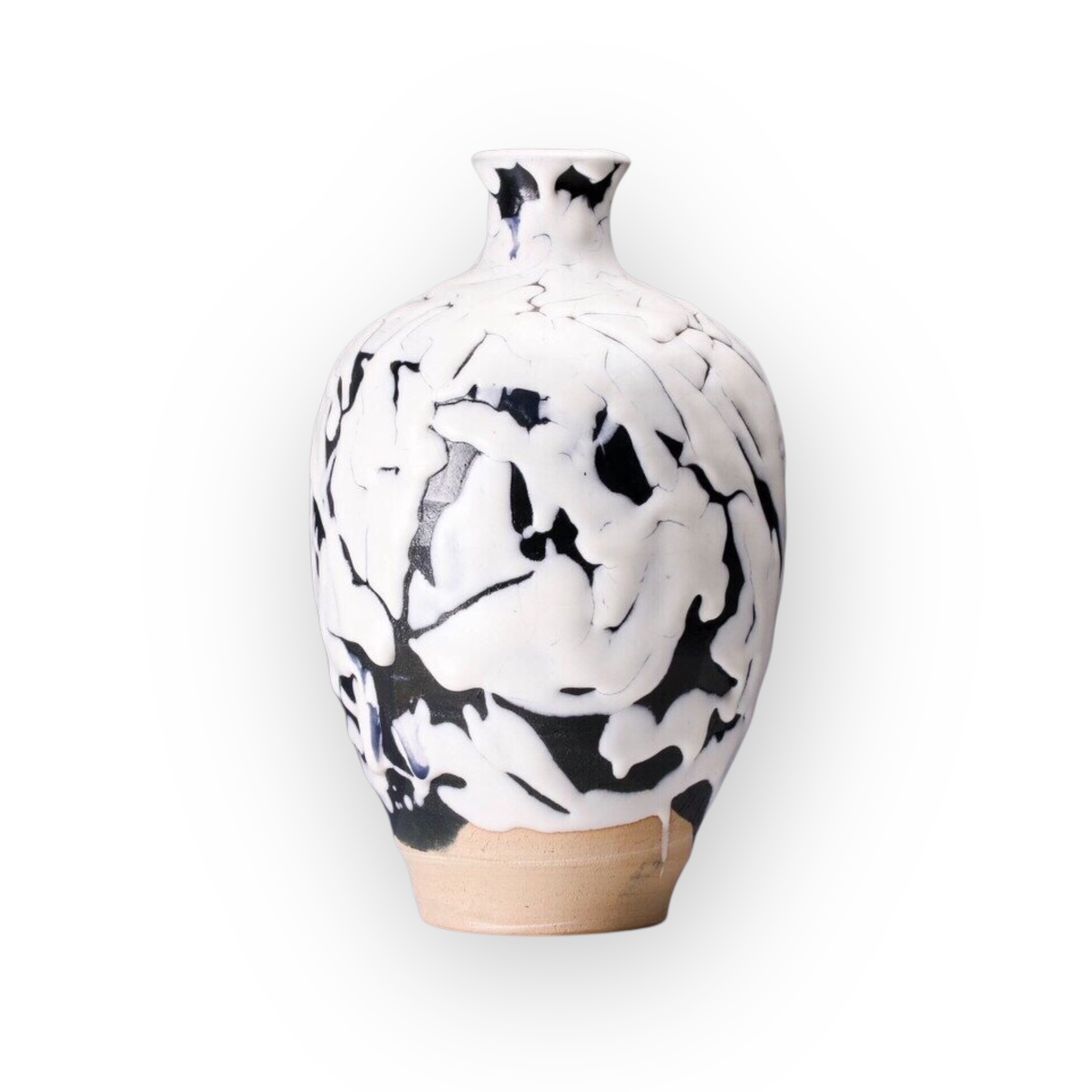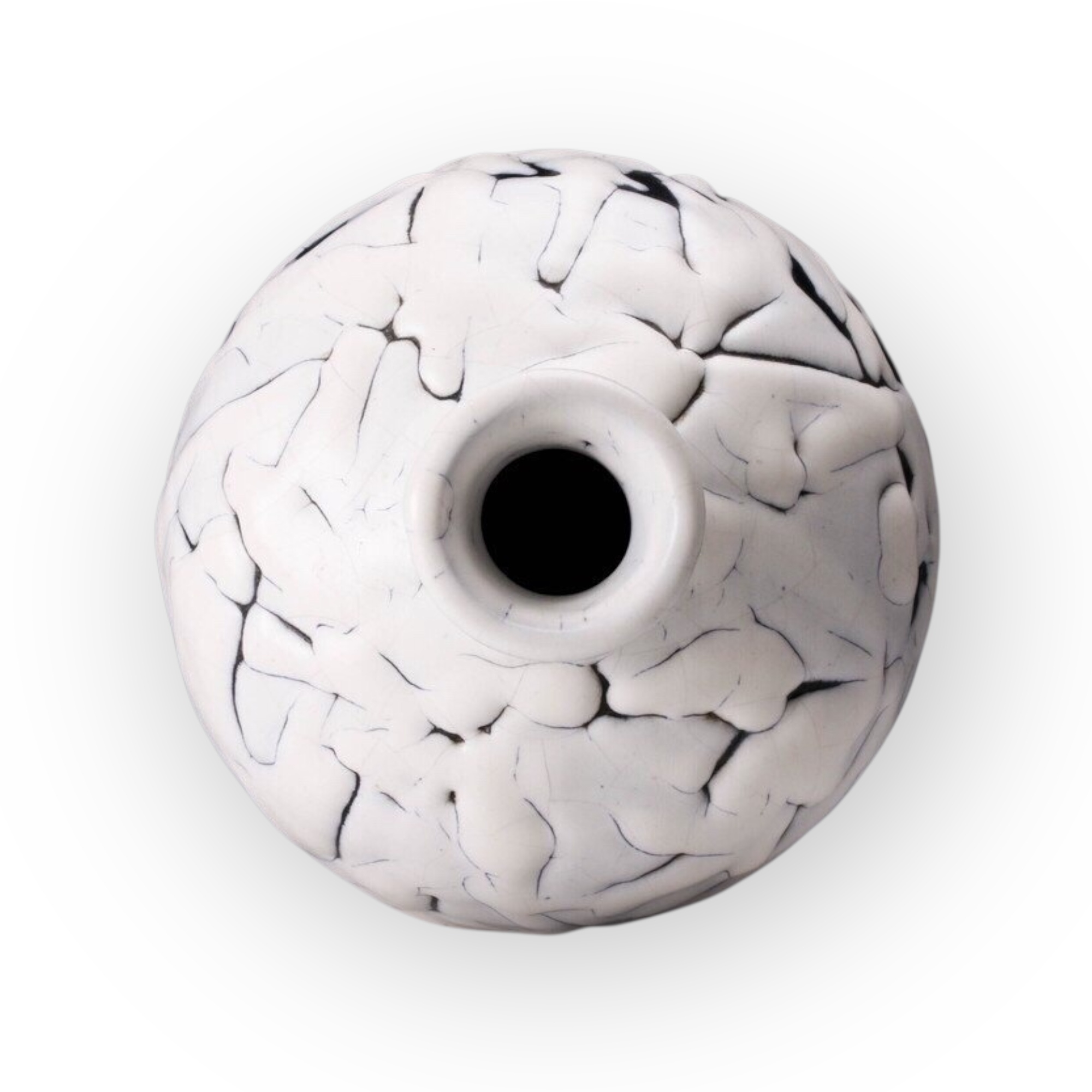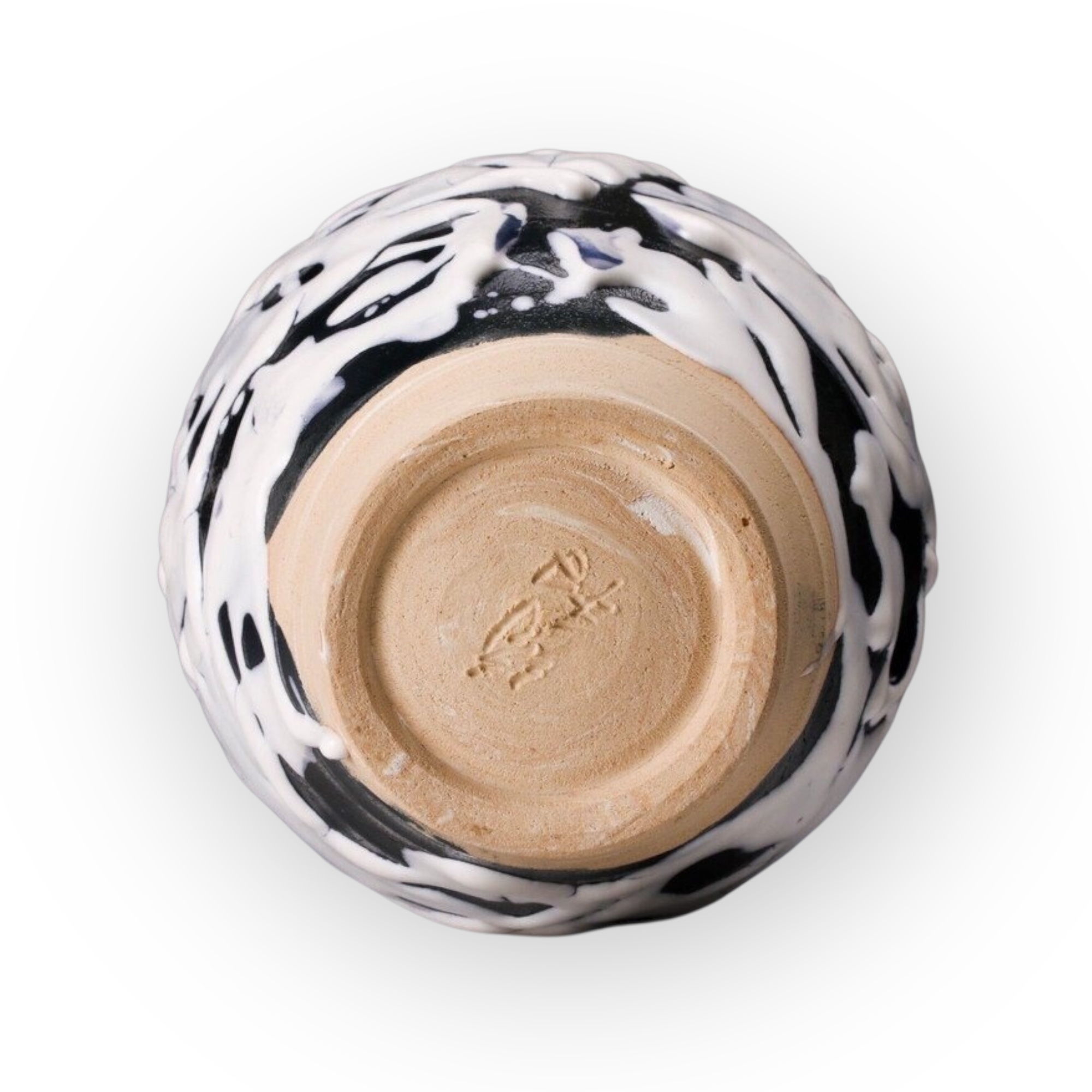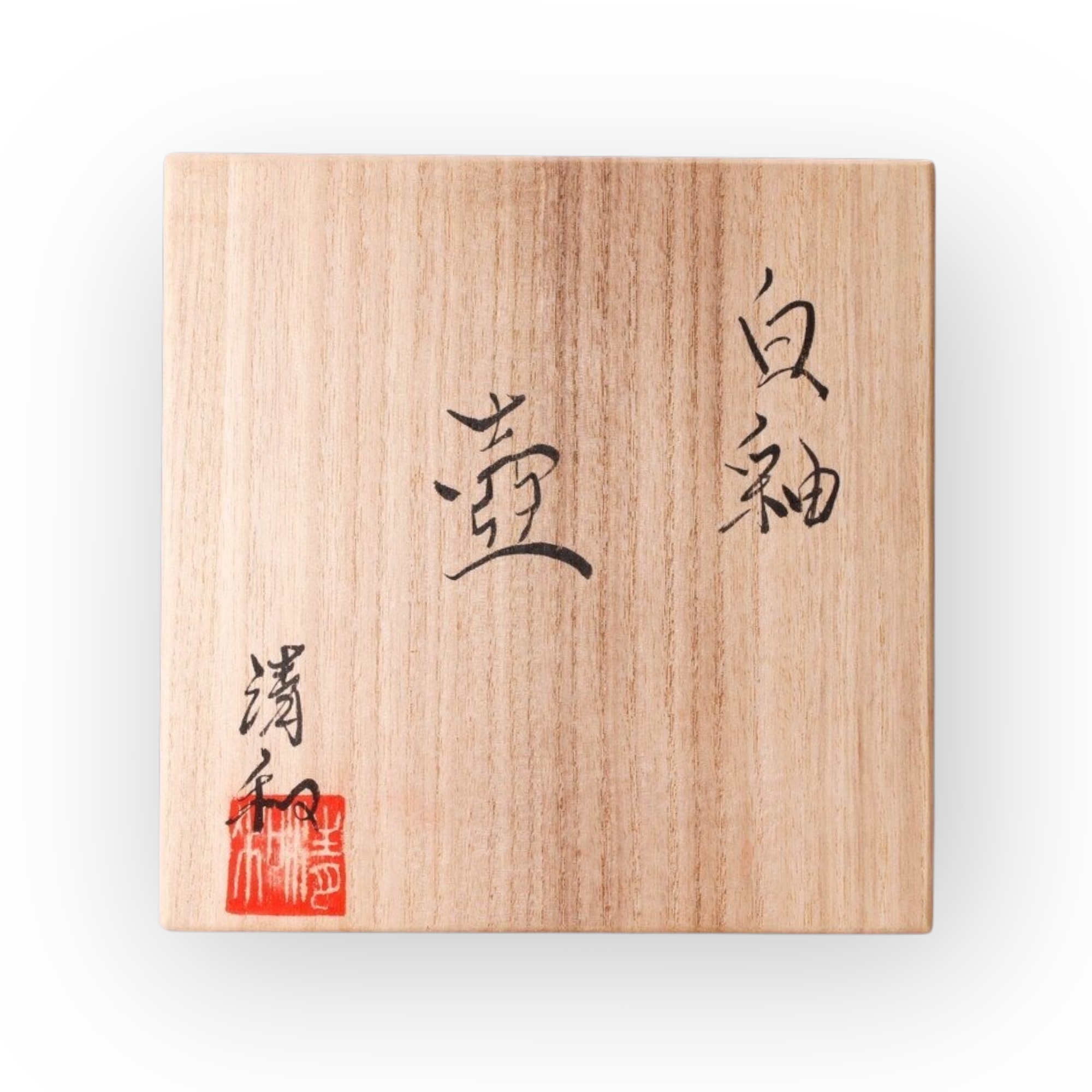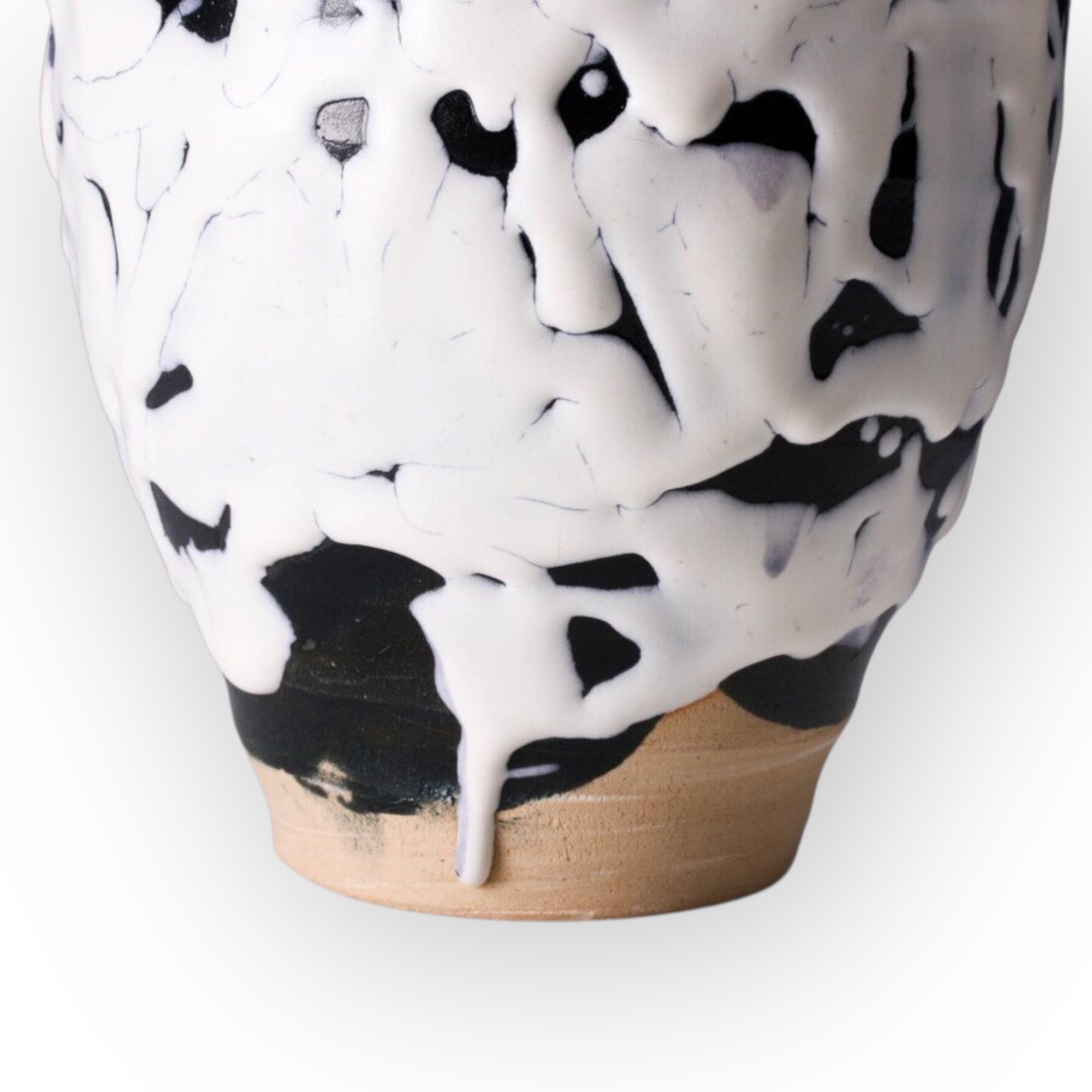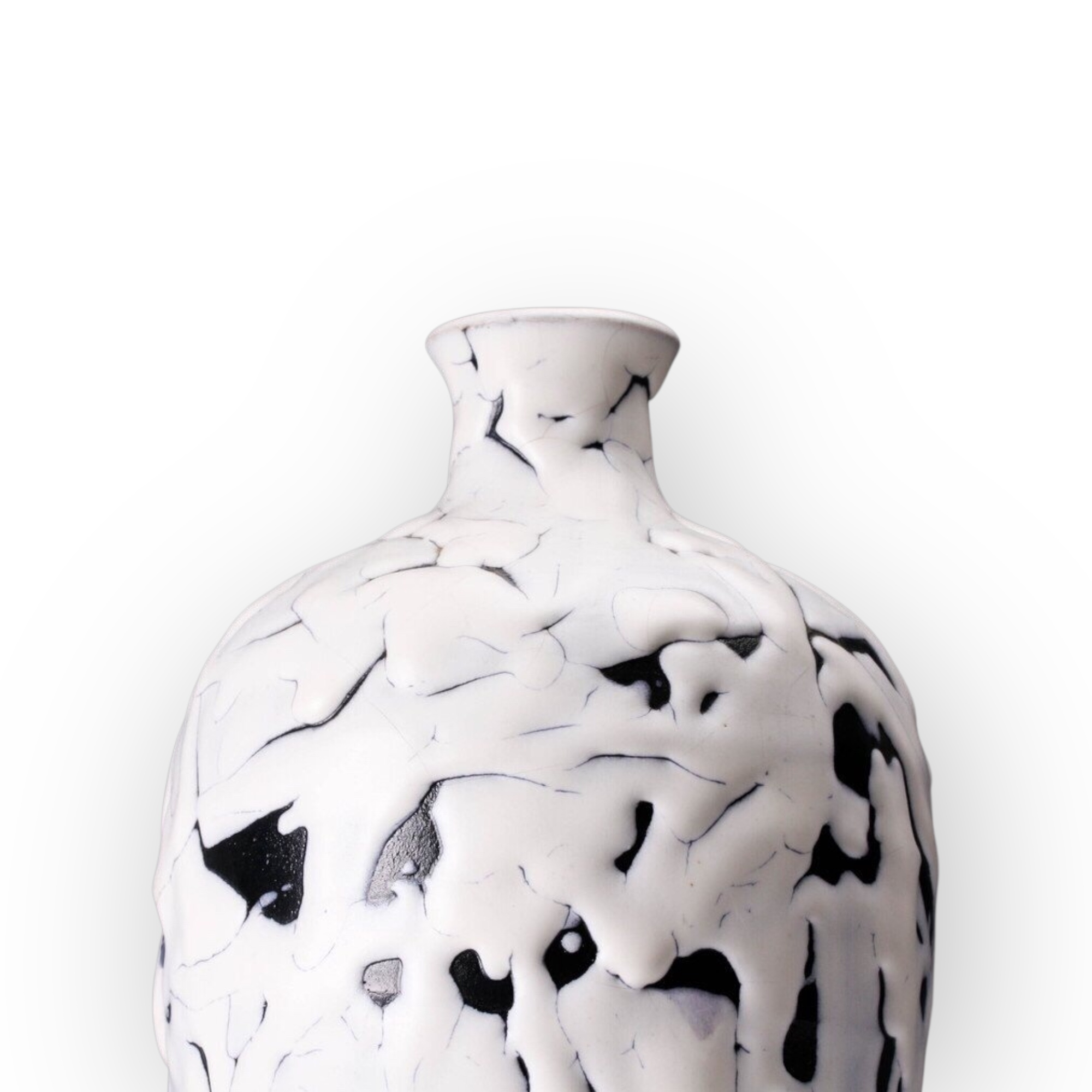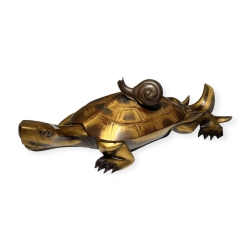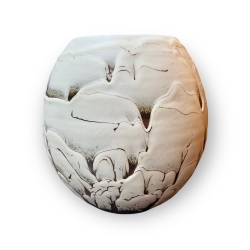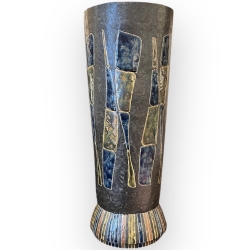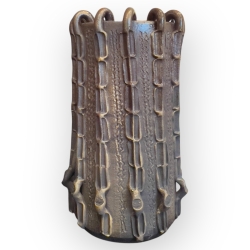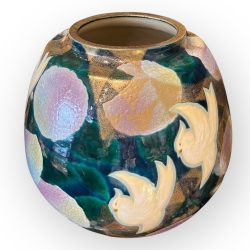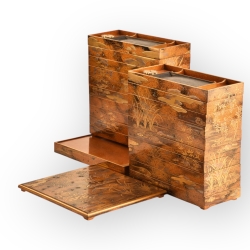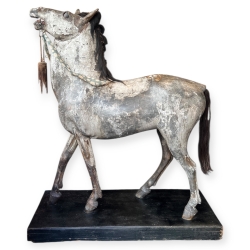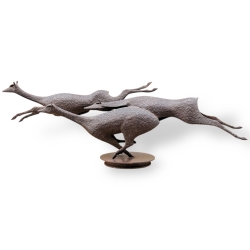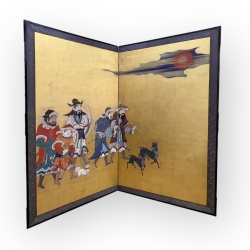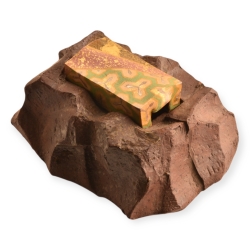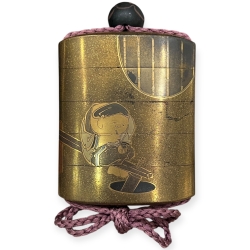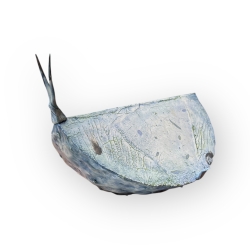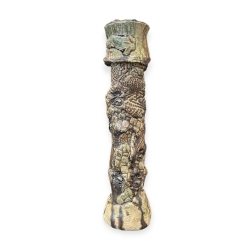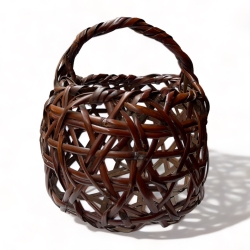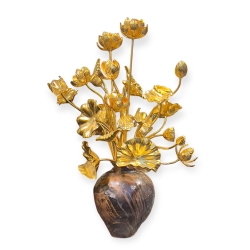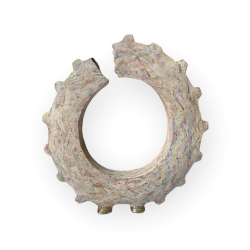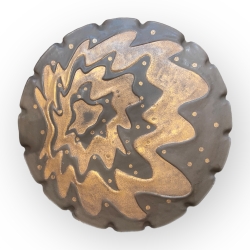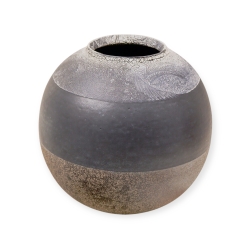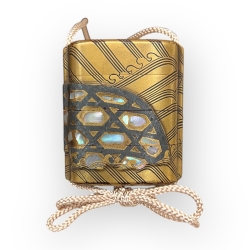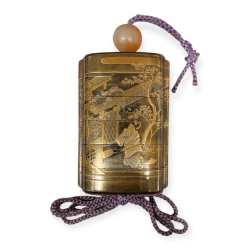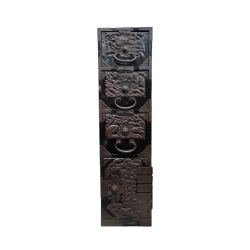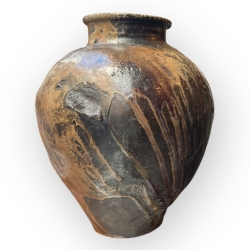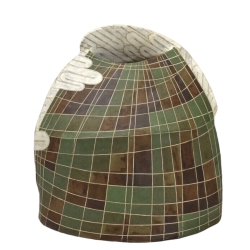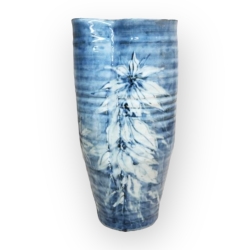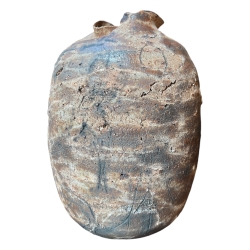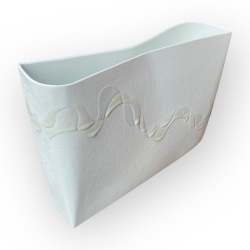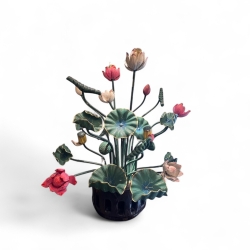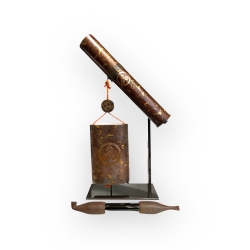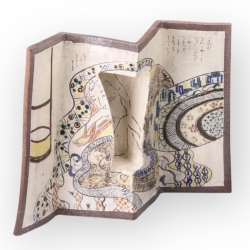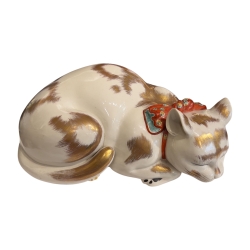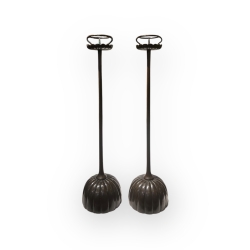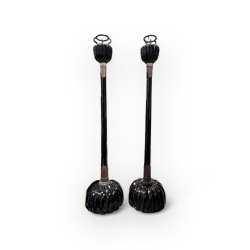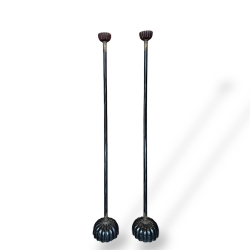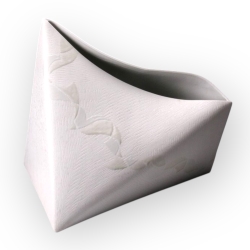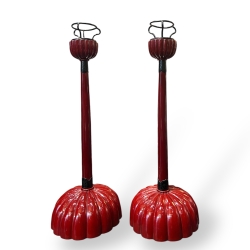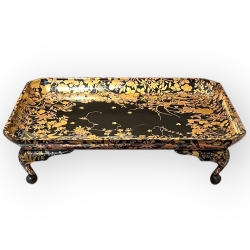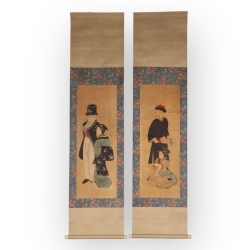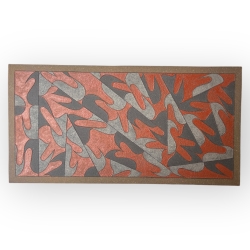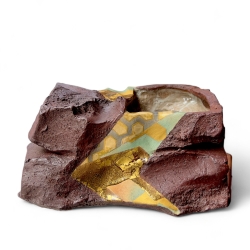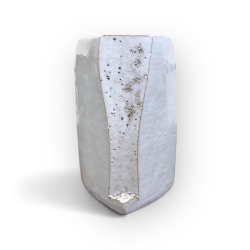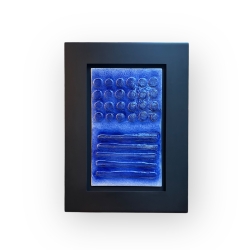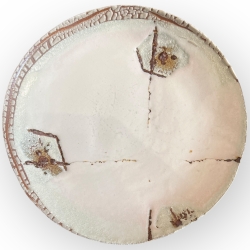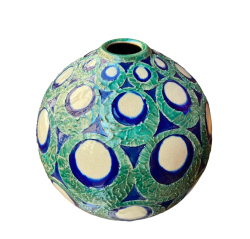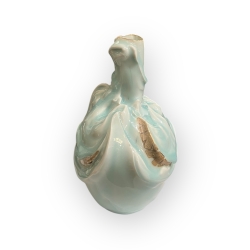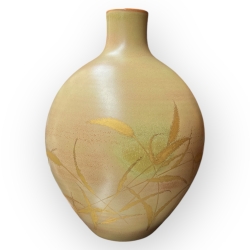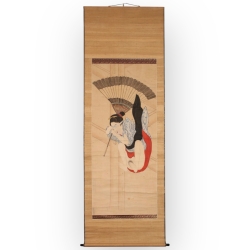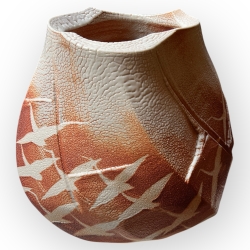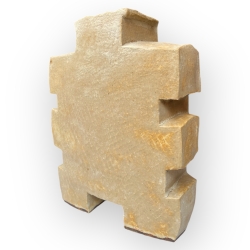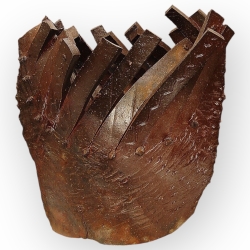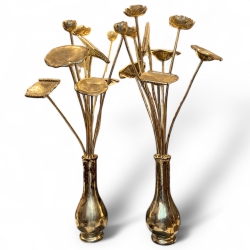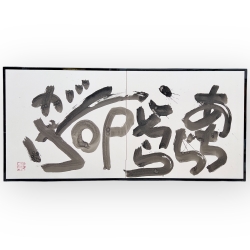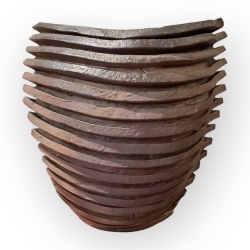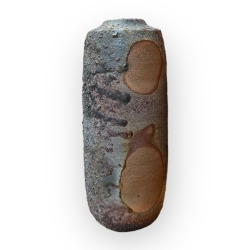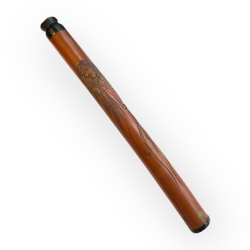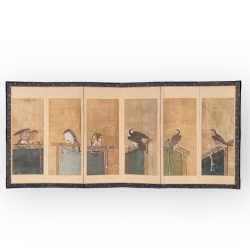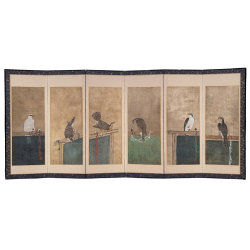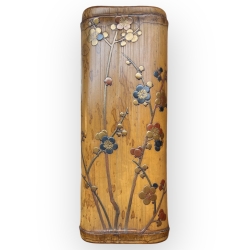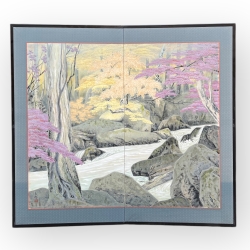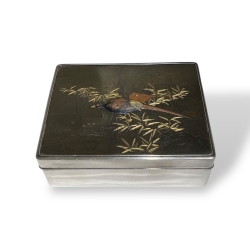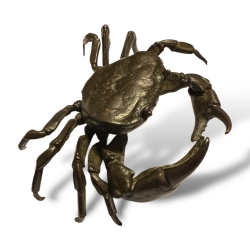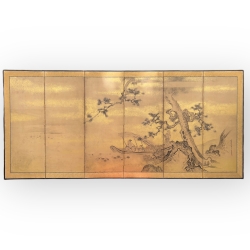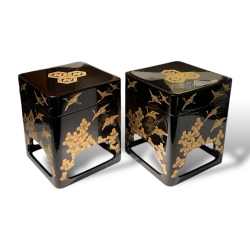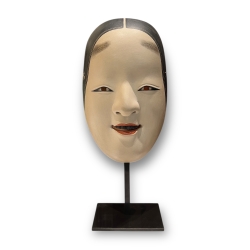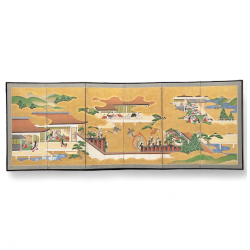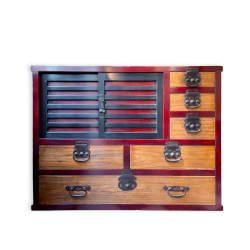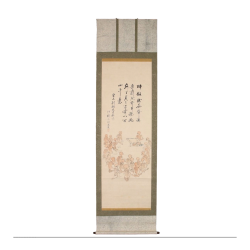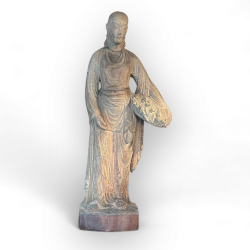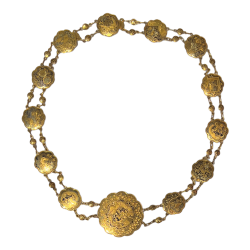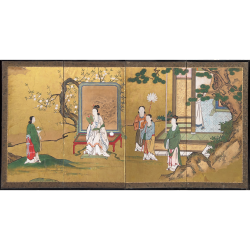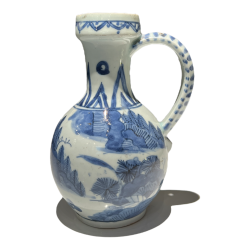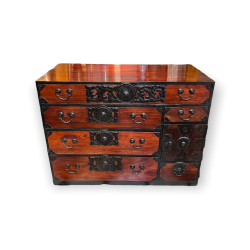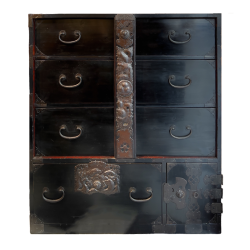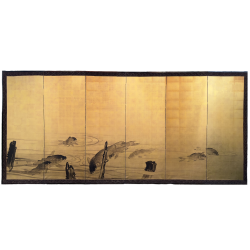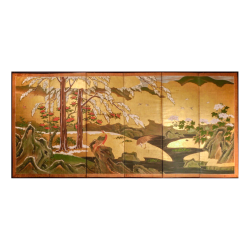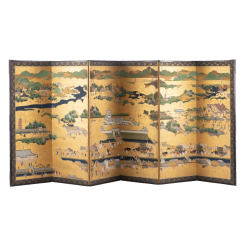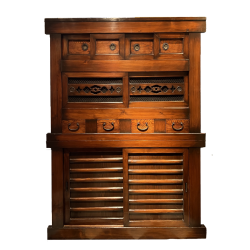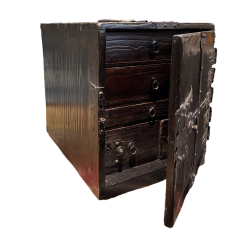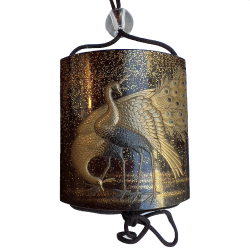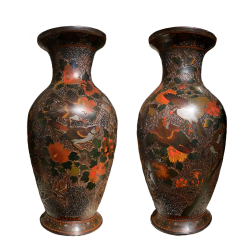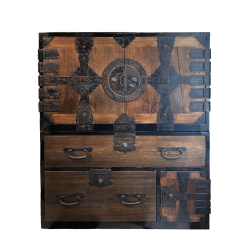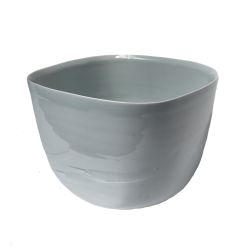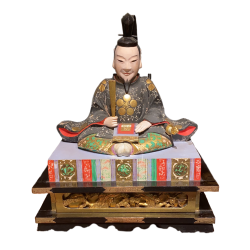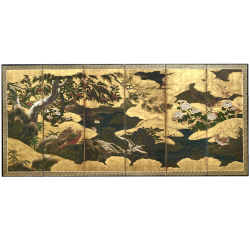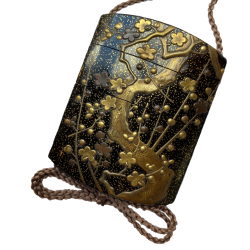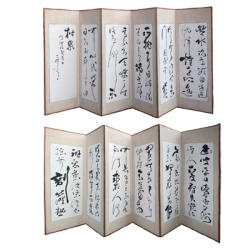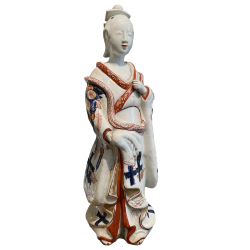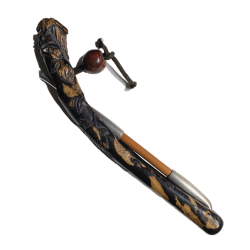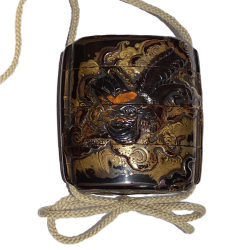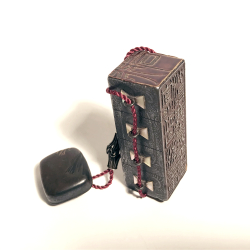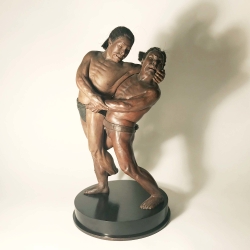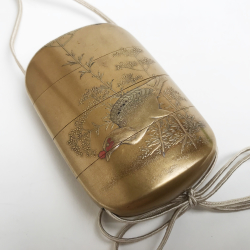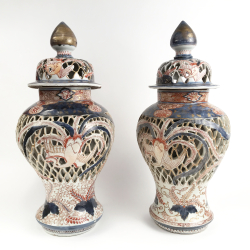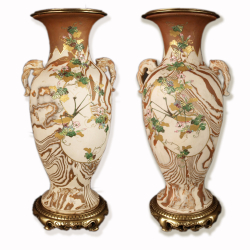
EXPERT ART d'ASIE Cristina ORTEGA Expert CNES et CEFA rts de la Chine et du Japon Asian Art-
Expert Chine Japon- Expert Asian Art - Carré Rive Gauche Paris Rue de Beaune- Expert art d Asie
Vase par Kato Kiyokazu, Japon, vers 2002
Description :
Vase par Kato Kiyokazu, Japon, vers 2002
Vase par Kato Kiyokazu, Japon, vers 2002
Ce vase de 27 cm, signé Kato Kiyokazu, appartient à un corpus de pièces développées dans les années 2000, reconnaissables à leur couverte blanche en épaisseur qui se fige en relief sur un fond noir mat. Le décor semble naître d’un choc, d’un épanchement figé, où la matière blanche se fend, s’ouvre, se tend, révélant ici et là le fond sombre. À la base, l’argile nue affleure, comme pour ancrer cette abstraction organique dans la terre. Rien n’est plat : la surface ondule, la couverte craquelle, épousant la surface du vase. Le contraste entre la blancheur figée et le fond noir profond donne une présence presque minérale à l’objet. Ce travail évoque les glaçures shino ou oribe mais s’en détache : ici, la matière semble s’écouler, coaguler, se contenir juste avant le débordement. C’est une signature formelle propre à l’artiste.
Kato Kiyokazu est né à Kyoto en 1970 dans une famille de potiers. Son grand-père, Jihei, perpétuait la tradition Furuta-Oribe dans la lignée des potiers de Seto.
Diplômé en 1990 du Kyoto Prefectural Technical College of Ceramics, il reprend en 2002 le Seizan-gama, four fondé par son père.
Dès lors, son travail affirme une esthétique personnelle, nourrie de l’héritage Mino tout en continuant la tradition familiale.
Son œuvre reçoit de nombreuses distinctions, dont le Grand Prix de la Japan Ceramic Art Exhibition en 2013, et fait l’objet de nombreuses expositions personnelles, notamment à la galerie Kuroda Toen à Ginza, où ce vase fut exposé. Sa maîtrise technique s’allie à une intuition plastique rare : chaque pièce semble émerger du feu avec une identité propre, oscillant entre matière en fusion et forme contenue.
Pièce vendue avec sa boîte d’origine signée.
Vase by Kato Kiyokazu, Japan, circa 2002
This 27 cm vase, designed by Kato Kiyokazu, belongs to a body of work developed in the 2000s, recognizable by its thick white glaze that solidifies in relief against a matte black background. The decoration seems to arise from a shock, a frozen outpouring, where the white material cracks, opens, and stretches, revealing here and there the dark background. At the base, the bare clay surfaces, as if to anchor this organic abstraction in the earth. Nothing is flat: the surface undulates, the glaze cracks, matching the surface of the vase. The contrast between the frozen whiteness and the deep black background gives the object an almost mineral presence. This work evokes shino or oribe glazes but detaches itself from them: here, the material seems to flow, coagulate, and contain itself just before overflowing. It's a formal signature unique to the artist.
Kato Kiyokazu was born in Kyoto in 1970 into a family of potters. His grandfather, Jihei, perpetuated the Furuta-Oribe tradition in the lineage of Seto potters.
A 1990 graduate of the Kyoto Prefectural Technical College of Ceramics, he took over the Seizan-gama kiln founded by his father in 2002.
Since then, his work has asserted a personal aesthetic, nourished by the Mino heritage while continuing the family tradition.
His work has received numerous accolades, including the Grand Prize at the Japan Ceramic Art Exhibition in 2013, and has been the subject of numerous solo exhibitions, notably at the Kuroda Toen gallery in Ginza, where this vase was exhibited. His technical mastery is combined with a rare visual intuition: each piece seems to emerge from the fire with its own identity, oscillating between molten material and contained form.
Piece sold with its original signed box.

